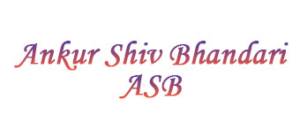Fork It, I Miss My Spoon: Choosing Authenticity over Acceptance, One Grain at a Time (8)
Fluffy basmati rice, steam rising; a little dal pooling at the edges. Maybe a bit of pickle for the brave. That perfect bite, balanced, warm, slightly messy, lovingly scooped with a Spoon; Not stabbed with a Fork; Not chased around like you’re playing tag with your dinner.
That was my childhood in India. Rice and spoon were a team, they understood each other. Then I moved to the West, and somewhere between work lunches, dinner invites, and the occasional “Oh you still use a spoon?” look, I made the switch. I forked my rice; Badly!
Not because it worked better , but because it helped me fit in. Or at least felt like I was trying to.
That’s how it often starts; Small things. A spoon here, a phrase there. You adjust to blend in, you stop correcting people when they say your name wrong, you laugh politely at jokes you don’t find funny, you wear the neutral colours, speak the expected way. Slowly, without noticing, you trade little pieces of your authentic self for the comfort of belonging.
We’ve all done it. Sometimes it’s survival, sometimes it’s strategy but sometimes, it’s just habit. And after a while, you forget what eating with the spoon even felt like.
But here’s the twist. Fitting in is not the same as being seen.
Have you seen The Devil Wears Prada ? Andy starts out as herself. Unsure, curious, maybe a little out of place. Then she transforms. Sleek clothes, designer shoes, fluent in fashion speak. She fits in, but somewhere along the way, she loses her spark. She realises she’s no longer herself, just a high-functioning version of who she thought she needed to be. In the end, she walks away. Not out of rebellion, but out of clarity. She chooses authenticity over approval.
We don’t connect with perfect people. We connect with real ones. The ones who occasionally spill dal on their shirts or pronounce things differently or eat rice the “wrong” way. Because that’s what being human looks like.
So yes, I can use a fork. I’ve adapted. I know my way around a salad. But when I’m home, when it’s Rajma Chawal night, when the food means something, I reach for the spoon.
Not just because it works better but because it feels like me.
And maybe that’s the point. You can learn the rules, adapt when needed, and still keep the parts of you that matter. You can show up with your spoon in a world full of forks.
Because sometimes, the best way to fit in is by standing out ✨.
❤️ASB







